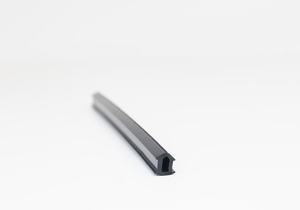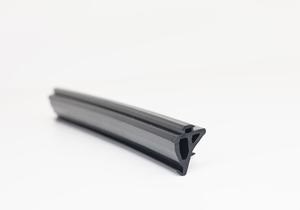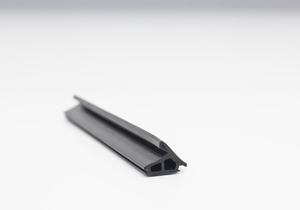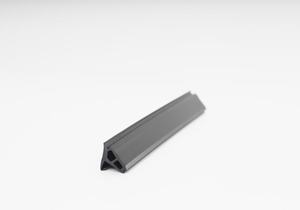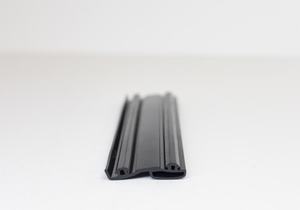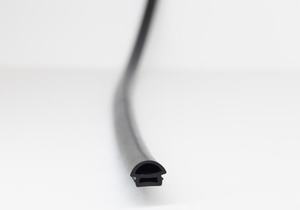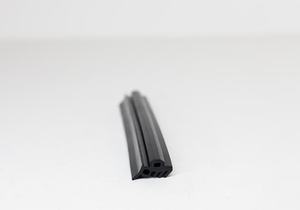Ethylene Propylene Diene Monomer (EPDM) rubber gaskets are versatile and widely used sealing components known for their exceptional durability, flexibility, and resistance to environmental factors. This synthetic rubber compound, composed primarily of ethylene, propylene, and a diene monomer, offers a unique set of properties that make it ideal for a wide range of applications across various industries. Below is a comprehensive description of EPDM rubber gaskets, highlighting their key characteristics, applications, advantages, and manufacturing processes.
Key Characteristics of EPDM Rubber Gaskets:
- Excellent Weather Resistance: EPDM gaskets are renowned for their outstanding resistance to weathering, UV radiation, and ozone exposure. They maintain their structural integrity and sealing properties even when exposed to harsh outdoor conditions, making them a popular choice for outdoor applications.
- Wide Temperature Range: EPDM rubber can withstand a broad temperature range, from -40°C to 150°C (-40°F to 302°F), without losing its elasticity or sealing capabilities. This versatility makes EPDM gaskets suitable for both extreme cold and hot environments.
- Chemical Resistance: EPDM rubber exhibits resistance to a variety of chemicals, including acids, alkalis, and polar solvents. This property ensures that EPDM gaskets maintain their sealing effectiveness when in contact with a range of fluids.
- Flexibility and Elasticity: EPDM gaskets are highly flexible and elastic, allowing them to conform to irregular surfaces and maintain a tight seal even under dynamic conditions, such as vibrations or fluctuations in pressure.
- Low Electrical Conductivity: EPDM rubber is inherently a poor conductor of electricity, making it suitable for applications where electrical insulation is necessary.
- Water and Steam Resistance: EPDM gaskets have excellent resistance to water and steam, making them suitable for use in applications where exposure to moisture or steam is common, such as in plumbing, HVAC systems, and automotive applications.
Applications of EPDM Rubber Gaskets:
EPDM rubber gaskets find widespread use in various industries and applications, including:
- Automotive: EPDM gaskets are used in automotive applications, such as sealing engine components, doors, windows, and HVAC systems, thanks to their resistance to automotive fluids, temperature extremes, and weather conditions.
- Construction: In the construction industry, EPDM gaskets are employed for sealing windows, doors, roofing systems, and curtain walls, providing an effective barrier against moisture and temperature variations.
- HVAC and Plumbing: EPDM gaskets play a critical role in HVAC and plumbing systems, ensuring leak-proof connections in pipes, fittings, and valves.
- Electrical Enclosures: Due to their electrical insulating properties, EPDM gaskets are utilized in electrical enclosures to protect sensitive components from moisture and environmental factors.
- Marine and Aerospace: EPDM gaskets are used in marine and aerospace applications to seal hatches, windows, and access points, as they can withstand exposure to saltwater, UV radiation, and extreme temperatures.
- Industrial Equipment: EPDM gaskets are employed in various industrial equipment, including pumps, compressors, and machinery, to prevent leaks and maintain operational integrity.
Advantages of EPDM Rubber Gaskets:
- Durability: EPDM gaskets have a long service life due to their resistance to aging, weathering, and chemical exposure.
- Cost-Effective: They offer a cost-effective sealing solution given their longevity and performance in diverse environments.
- Environmental Friendliness: EPDM rubber is recyclable and has a lower environmental impact compared to some other sealing materials.
- Easy Installation: EPDM gaskets are easy to work with, can be cut to size, and are available in various forms, including sheets, strips, and custom-molded shapes.
Manufacturing Process:
EPDM rubber gaskets are typically manufactured through a vulcanization process. This process involves mixing the EPDM compound with curing agents and accelerators, shaping the mixture into the desired gasket profile, and then subjecting it to heat and pressure. The vulcanization process crosslinks the polymer chains within the rubber, enhancing its mechanical properties and ensuring it retains its shape and sealing performance over time.
In conclusion, EPDM rubber gaskets are indispensable components in numerous industries due to their remarkable properties, which include excellent weather resistance, wide temperature tolerance, chemical resistance, flexibility, and electrical insulation. These gaskets provide effective sealing solutions in applications ranging from automotive and construction to HVAC and industrial equipment, making them a reliable choice for demanding sealing needs. Their durability, cost-effectiveness, and ease of installation further contribute to their popularity in various sectors.
